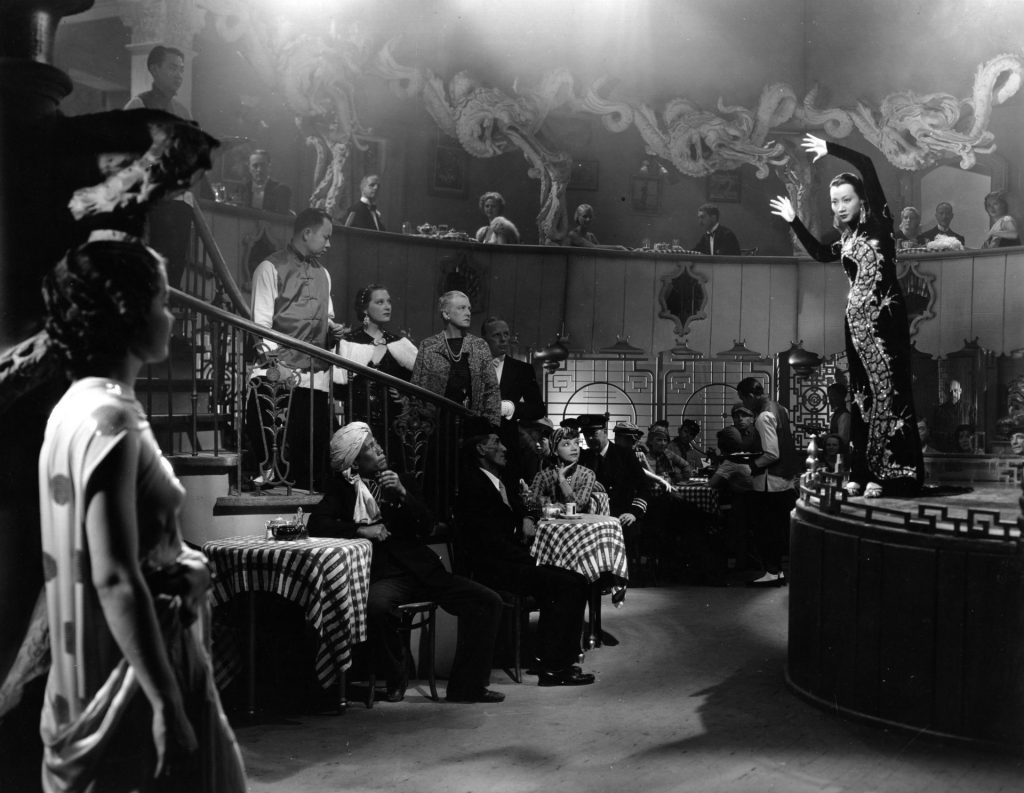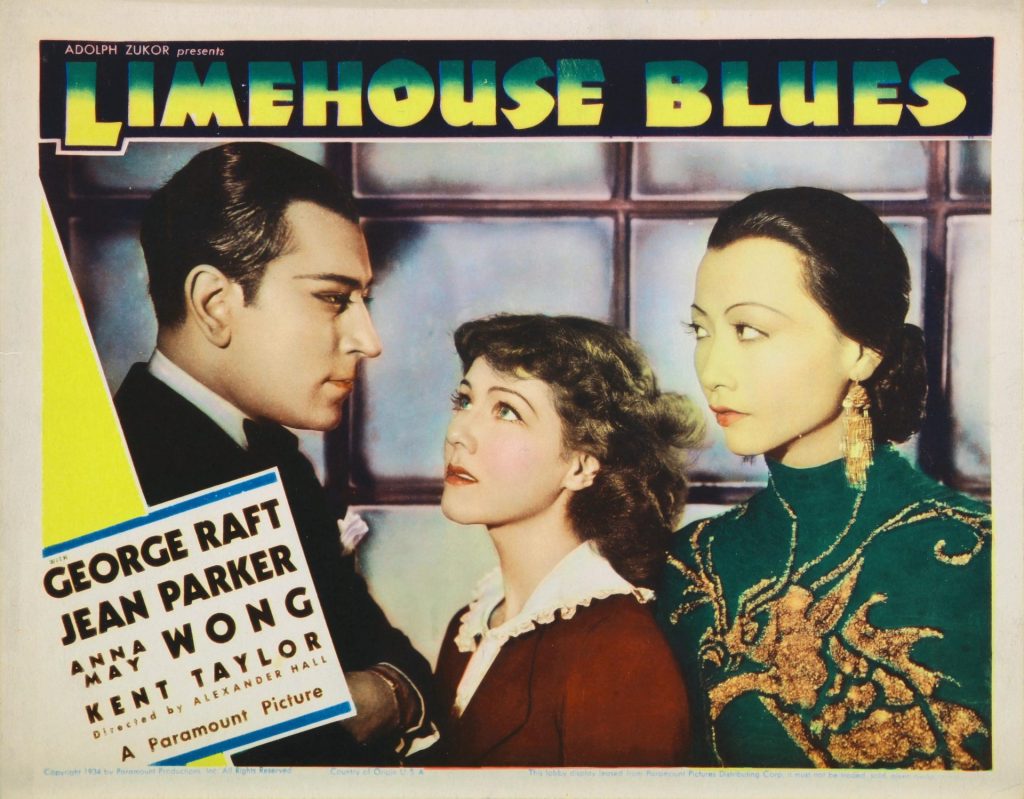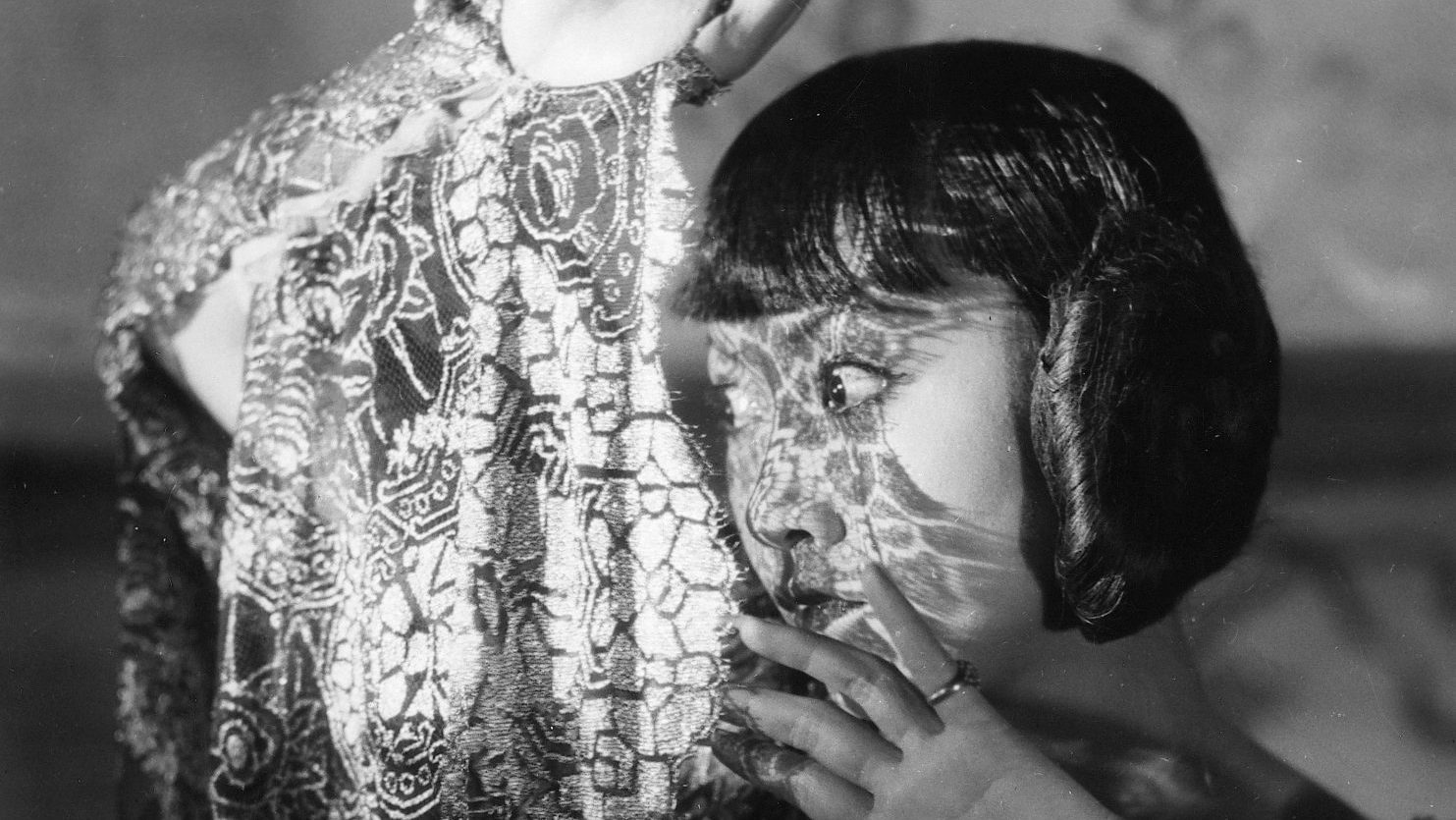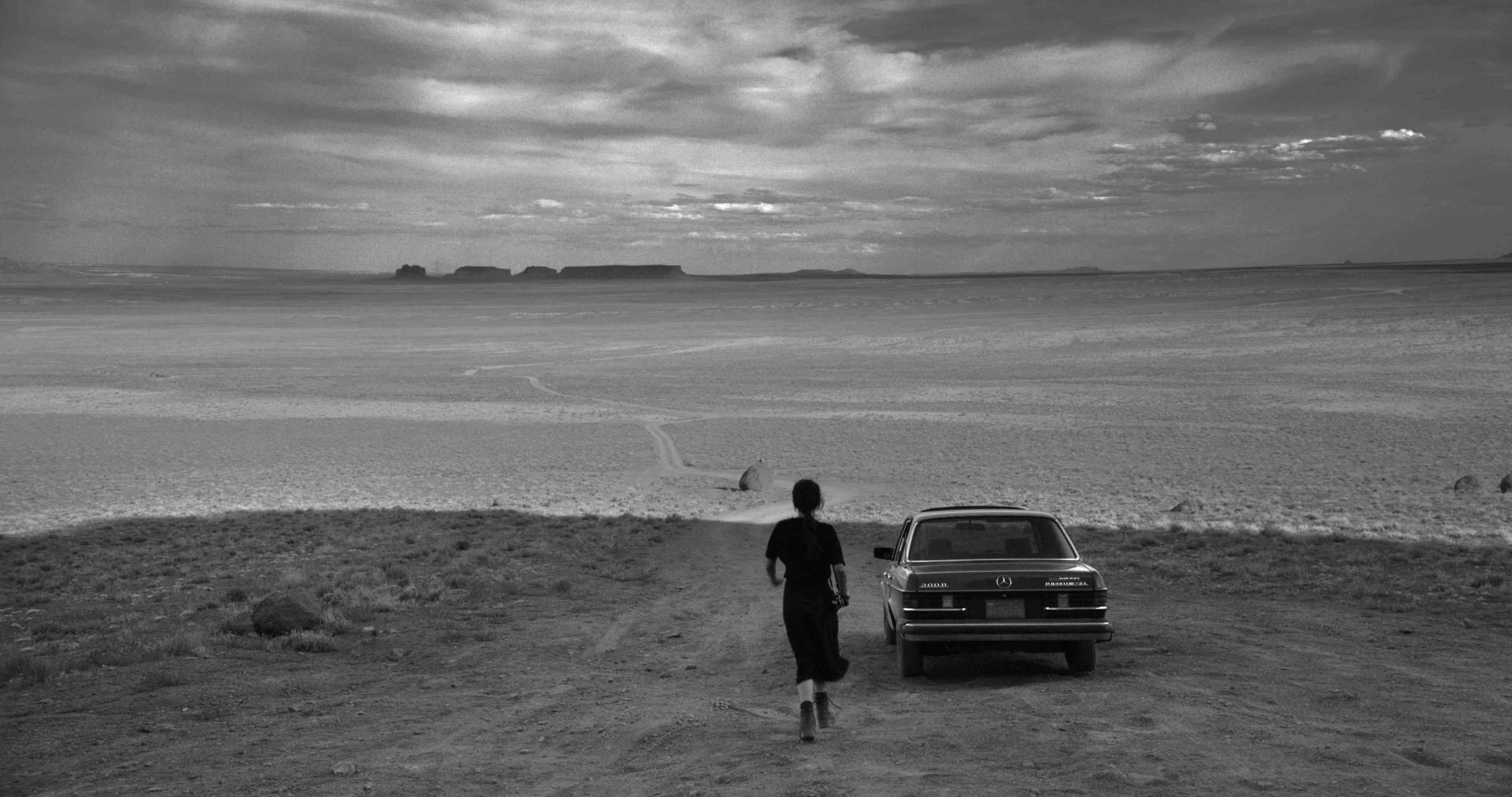By the time she died in 1961, Anna May Wong was all but forgotten. Such obituaries as there were called her a ‘movie star’ but that hadn’t been true for a decade or more – she’d only appeared in two films since 1942, and those were hardly distinguished roles.
Her legacy looks rather brighter in the 21st century. It’s not just her style and sheer cinematic presence that have been rediscovered, by way of revivals of her films; her story has also caught the attention, a tale of prejudice and perseverance that resonates more loudly in our times than it did in her own.
That story has a European dimension too; her most celebrated film is Piccadilly (1929) – a film made by a British company, with an international cast and crew. It’s been re-released in a glorious new restoration, and while silent films aren’t to every taste, it’s a must for anyone who craves a picture with a bit of pizazz.
It’s worth asking how a Chinese-American woman wound up making movies in London, for such things don’t happen very often even now. She was born in Los Angeles, the eldest child of a traditional Chinese family, who had traditional expectations: it was assumed that Wong Liu Tsong – as she was born – would work for her father in his laundry. Defiant after being th subject of racist bullying at school, she had other ideas.
Like almost every other American born in 1905, Anna May Wong – as she styled herself outside the family home – was obsessed with movies. And since she lived so close to Hollywood, not even parental displeasure was going to stop her from sacking off the laundry and joining all the other wannabes at casting sessions. Still only 14, she started to find work as an extra, but what budding starlet would settle for that?
Her big break came in 1922. The Toll of the Sea was the very first all-colour Hollywood film, a variation of Madame Butterfly in which a young Chinese woman finds a shipwrecked American (spoiler: the path of true love does not run smooth). It was a success, boosting our heroine’s career, but traded on any number of stereotypes (or at least preconceptions) about China and Chinese women. At the time Wong was just happy to have made it in movies. Only later would she realise how restrictive the roles Hollywood would let her to play really were.
There was a lot of racism everywhere in the 1920s, of course, and unlike a great many talented black performers, Wong at least enjoyed some high-profile gigs. But still it was demeaning; Chinese people were considered unknowable, their culture unfathomable. Wong was usually cast in roles that called for an ‘exotic’ presence, like some rare specimen at a zoo to thrill (or frighten) picture-goers. She played Eskimos, slave girls and sundry women of ill-repute; rarely could her characters be trusted. It paid well enough but it was hardly what she had dreamt of, or what she had hustled for.

By 1927 – a veteran, by now – it was clear to her that Hollywood had a different idea of her talents than she did herself. So when an offer came to appear in a German movie, she was intrigued. The film, directed by German filmmaker Richard Eichberg, was called Song (1928), and Wong agreed to take the title role, a waif who takes up with a man on the run. So rewarding did she find the experience that she decided to relocate to Weimar Berlin, not just appearing in movies like Pavement Butterfly but working in opera and Vienna and creating a nightclub song ‘n’ dance act that she took across Europe.
That brought her to London, where she was cast in Piccadilly as a kitchen skivvy who becomes the leading attraction at London’s hottest ‘nite spot’, famed for her saucy dancing. Her character, ShoSho drives men wild with her gyrations, amongst them club-owner Val Wilmot, played by Jameson Thomas, the Colin Firth of the 1920s. The trouble is, he’s in a relationship with another dancer, Mabel (Gray). (It’s heady stuff, honestly.)
Despite its British base, Piccadilly was a thoroughly international affair – producer Michael Balcon imported top technicians from Germany, then Hollywood’s main rival – and the result is one of the last great silent movies. Director E.A. Dupont certainly deserves his share of the credit for that but its principal asset is undoubtedly Anna May Wong. She wasn’t the top-billed player – that was another Hollywood import, the Polish-born Gilda Gray – but from the moment she is first glimpsed, distracting her fellow serfs with a seductive shimmy, it’s clear who the real star is.
There’s certainly a slight whiff of stereotypes here as ShoSho cavorts in immodest garb that emphasises her heritage. But this is Britain in the 1920s, not the US and class is a bigger issue than race. It seems likely that the character that became ShoSho was originally written for an Occidental actress; if she’s something of a schemer, it’s because she wants to escape the slums, not because she’s inherently untrustworthy.
Surprisingly little is made of the potentially ‘interracial’ dimension of the brewing affair; Mabel is more upset that ShoSho doesn’t actually love Val than she is at her ethnicity.
Piccadilly has an unusually progressive approach to racism, far more than you might think for a film from The Jazz Age. It’s not just the relaxed attitude that it takes to the (potential) affair between ShoSho and Val. At one point, a black man is expelled from a pub for – brace yourself – dancing with a white woman, something that the film itself is far more broadminded about, showing their dance at considerable length, a moment that would have been excised from American prints.
Elsewhere, there’s even a bit of proto-#MeToo, as Mabel is pawed by her sometimes dance partner. It all seems terribly modern.
Just as in Berlin, fashionable London clasped Wong to their collective bosom. In addition to her nightclub performances, she even trod the boards in legitimate theatre, opposite no less than Laurence Olivier in The Circle of Chalk. (When critics attacked her diction, she took elocution lessons to talk proper, something that proved an advantage with the arrival of talking pictures.)
Wong’s own favourite of her films was the last one she made in Britain (and, indeed, Europe). This was Java Head, a ripe, Bristol-set melodrama which sees her playing the Chinese bride of an English sea captain whose family are none-too-pleased with their new in-law. It’s a study of racism that must be seen as pioneering for its day, and not just in its subject matter: this was the only film in which Anna May Wong kissed a white man on screen, something then utterly unthinkable in America.
But it was to America that she would return, and not simply because she was homesick. Her popularity in Europe had caught the eye of Hollywood talent scouts (who possibly didn’t realise she was one of their own), and they signed her up with the promise of big roles. And at first, that seemed true: she co-starred with Marlene Dietrich (an old pal from Berlin) in Shanghai Express, one of the big hits of the year and one which saw her singled out for praise by the critics.
It was a false dawn. She made a strange return to a fake London in Limehouse Blues, where the East End’s docks were reconstructed on the harbour of San Pedro, Los Angeles, and leading man George Raft wore yellowface.

Mostly she was dispatched to B movies, playing villainous dragon ladies of the sort she had once fled to Europe to avoid. She would say later, “Why is it that the screen Chinese is always the villain? And so crude a villain—murderous, treacherous, a snake in the grass! We are not like that. How could we be, with a civilization that is so many times older than the West?”
If Wong was in any doubt that things hadn’t changed then The Good Earth (1937) – adapted from a then blockbuster novel about the Chinese peasantry – confirmed it.
You’d think she’d have the (Chinese) female lead sown up. And so she did, until the studio cast (the white) Paul Muni as the (Chinese) hero. The old problem of ‘miscegenation’ reared its ugly head again: a Chinese-American actress could not lay lips upon a white actor, no matter how carefully he had been ‘yellowed up’. Luise Rainer, an Austrian, took the role instead. To make matters worse, Rainer took an Oscar for it too.
Anna May Wong stepped away from screen work in 1942, the better to concentrate on helping the war effort against the Japanese. She appeared rarely in cinemas thereafter, although she kept her hand in with some occasional TV work, in the days before TV had any prestige whatsoever.
Very briefly she even had a show all of her own: The Gallery of Madame Liu-Tsong (1951, note that ‘Liu-Tsong’ was her real name), in which she played an amateur detective who also owns an art gallery. They only made 10 episodes and none of them survive, but it has some historical significance as the first television series with an Asian-American lead.
Her posthumous fame was enhanced when Wong was a character in the Netflix series Hollywood (2020), which offered an alternate history of its early days, and it looks set only to increase. Next year, assuming all goes to plan, a film called Babylon will be released. Directed by Damien Chazelle (he who made La La Land), it’s a story about Old Hollywood, as silent pictures gave way to the talkies.
And one of its leading characters will be Anna May Wong, to be played by actress Li Jun Li (although she appears to be rather older than Wong was herself at that time). Details are being kept under wraps but it is whispered that the racism she suffered will be brought to the fore.
We can wonder what Wong might have been able to achieve had she lived in a more generously-minded era, but that is to look down the wrong end of the telescope. Look at just how much she was able to achieve, at all the trails she blazed 80, 90, 100 years ago: she was never really a Butterfly, never really a Dragon Lady, but she must have been a hell of a woman.
Double Jeopardy
As befitting her dual images as the tragic Butterfly or mysterious Dragon Lady, Anna May Wong was often linked with starcrossed love affairs.
She had a fling with married Freaks director Tod Browning when she was 19 and he 42. British screenwriter and lyricist Eric Maschwitz, unable to forget her, supposedly wrote These Foolish Things in Wong’s honour (it was actually about cabaret singer and Daily Express war correspondent Jean Ross). There were rumours of a secret marriage to a wealthy Cantonese man named Art.
There was talk too that Wong was bisexual, and it seems likely that this contributed to the stalling of her career as well as her ethnicity. She was claimed to have been a lover of Marlene Dietrich, although this may be just as a result of the sexual tension in their shared scenes in Shanghai Express. She was linked too with the female actor Cecil Cunningham, who often played coded lesbian roles, and with being part of the ‘sewing circle’ created by the openly bisexual actor Alla Nazimova. Most intriguingly of all, her German period supposedly featured an affair with filmmaker Leni Riefenstahl, later the Nazi propagandist of Triumph Of The Will.
Supporting evidence produced for these claims usually includes the fact that Wong, successful, brilliant and beautiful, never officially married. Yet the low regard in which actors were held in the community she grew up in probably precluded a wedding to a fellow Chinese-American, while laws preventing mixed-race marriage in California were not repealed until 1948.
Piccadilly is out now on Blu -Ray by the BFI shop.bfi.org.uk/



